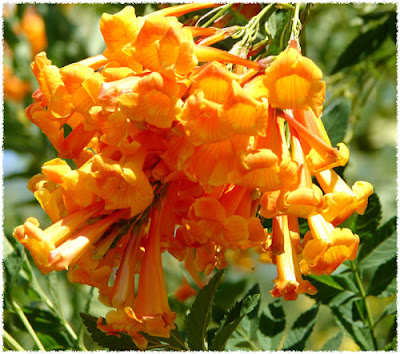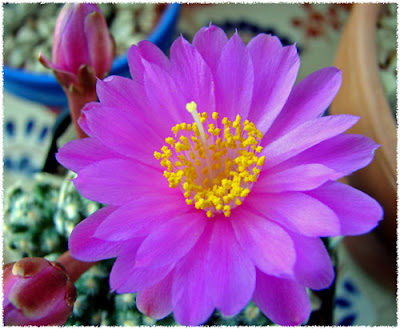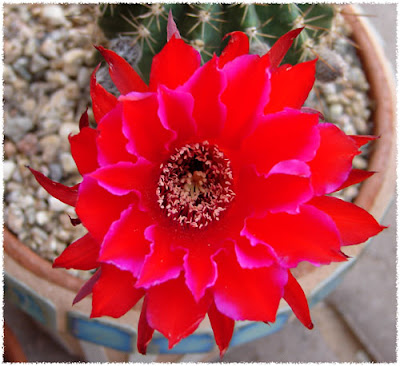T. setispinus
, known as Miniature Barrel Cactus, and will grow to about six inches high and four inches in diameter. It will retain its globular shape while young, and then become more elongated. Although it has been reclassified as Thelocactus for some time, it is sometimes still labeled as Ferocactus setispinus or Hamatocactus setispinus. Another common name for this cactus is Strawberry Cactus.An interesting characteristic of Thelocactus is that it can have spines that range in color from white to red to brown, and even yellow, and all these color spines can be on the same cactus. The T. setispinus ususally has dark brown and white spines, but I can also see some yellow coloration on the hooked central spines of this cactus.
This cactus needs light shade in Phoenix. It is a summer grower, so it needs supplemental water. It liks sandy soil, so I heavily amended my garden soil with sand and pumice before planting it.





























 Many species of Mammillaria need light shade in Phoenix, so I have them planted under the dappled shade of the Palo Verde trees. It provides the perfect environment for protection in brutal summers, and offers some protection from frost. The downside is that most Mammillaria flower in late April/early May, just when the Palo Verde is in full bloom. The result is cacti covered with dried Palo Verde flowers, which are impossible to remove without using a blower. Even then, remnants remain for a couple of months. I tried to clean this one off for a decent photo, to no avail. The hooked central spines of the M. magnifica exacerbate the problem.
Many species of Mammillaria need light shade in Phoenix, so I have them planted under the dappled shade of the Palo Verde trees. It provides the perfect environment for protection in brutal summers, and offers some protection from frost. The downside is that most Mammillaria flower in late April/early May, just when the Palo Verde is in full bloom. The result is cacti covered with dried Palo Verde flowers, which are impossible to remove without using a blower. Even then, remnants remain for a couple of months. I tried to clean this one off for a decent photo, to no avail. The hooked central spines of the M. magnifica exacerbate the problem.




















